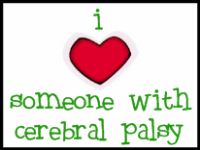Welcome to Friday Facts! here on the Knowledge Safari blog. Each week we aim to shine the spotlight on various segments of special needs in order to raise awareness and provide information. Today we focus on Diencephalic Syndrome.
The following is taken from and more information can be found at: The PLGA Foundation
Diencephalic Syndrome is a rare cause of failure to thrive associated with hypothalamic-optic chiasm region tumors.
Diencephalic Syndrome may also be referred to as: diencephalic syndrome of childhood, diencephalic syndrome of emaciation, paramedican diencephalic syndrome, Russell’s diencephalic cachexia, Russell’s syndrome.
Basic Information on Diencephalic Syndrome
History: In 1951 Russell described a syndrome where young children with hypothalamic tumors were emaciated despite normal caloric intake. There have been several case series reported since that time. In 1976, Burr, reported a review article of 72 cases delineating the clinical characteristics of this syndrome.
Age: Normally seen with infants or young children although there have been reports in older children and adults. In Fleischman’s series of 11 patients treated at Dana-Farber Cancer Institute, the median age at diagnosis was 18 months (range 4-56 months)
Symptoms/Characteristics: severe emaciation despite normal caloric intake, normal linear growth, normal intellectual development, abnormal eye movement such as nystagmus and sometimes blindness which may be from optic atrophy. Symptoms of increased intracranial pressure may also be present. Some case series have reported hyperactivity, hyperalertness, euporhia and vomiting. This has not been consistently observed in all case series.
Tumor Type: The most common tumor type associated with diencephalic syndrome is pilocytic astrocytoma. Other gliomas that have been associated with diencephalic syndrome include pilomyxoid astroctyoma, ganglion cell tumors, pleomorphic xanthoastrocytoma, astroblastoma, dysembryoplastic neuroeithelial tumors and choroid plexus tumors. Occasionally, a third ventricle ependymoma may appear like a hypothalamic astrocytoma. Fleishman et. al. noted tumors causing diencephalic syndrome tended occur at a younger age, be larger when found and behave more aggressively than tumors in a similar location that did not produced diencephalic syndrome.
Tumor Location: Usually both the hypothalamus and the optic chiasm are involved. The tumor may be solid or cystic, may compress the frontal lobes and may extend into the third ventricle.
Treatment: Treatment is similar to other hypothalamic low grade tumors without diencephalic syndrome and may include surgery, radiation or chemotherapy. The anatomic location however often makes this tumor unresectable. Chemotherapy regiments for hypothalamic low grade tumors include carboplatin, carboplatin/vincristine, carboplatin/vincristine/temador, vinblastine, TPCV and others.
Mechanism: The mechanism for diencephalic syndrome has not be clearly defined. Fleischman postulates a mechanism based on growth hormone resistance.
Prognosis: The biologic behavior is that of a slowly growing, indolent tumor in an eloquent CNS location. Some tumors remain stable for years while others may recur in the form of cystic fluid accumulation. Patients have long survivals but have chronic symptoms of hypothalamic dysfunction and visual problems.
Hello Again
1 week ago































No comments:
Post a Comment